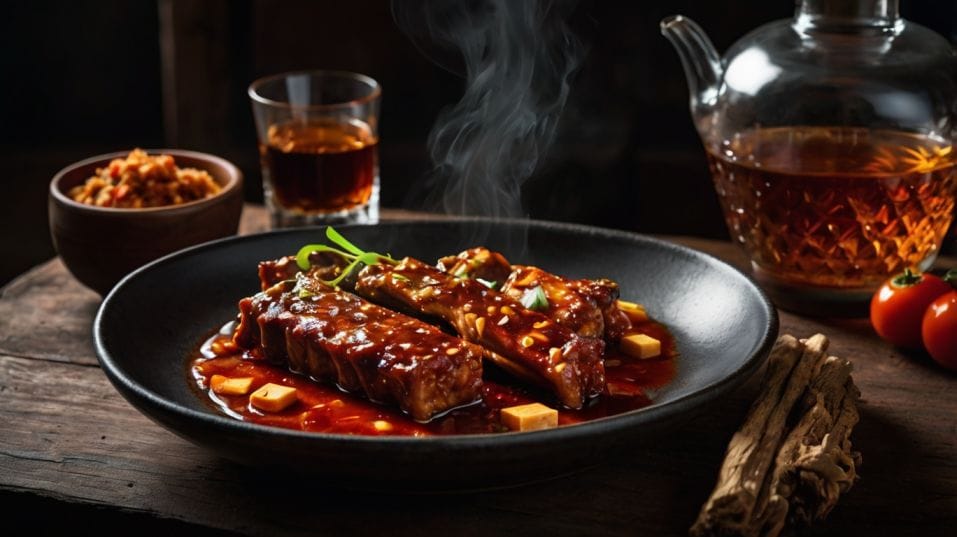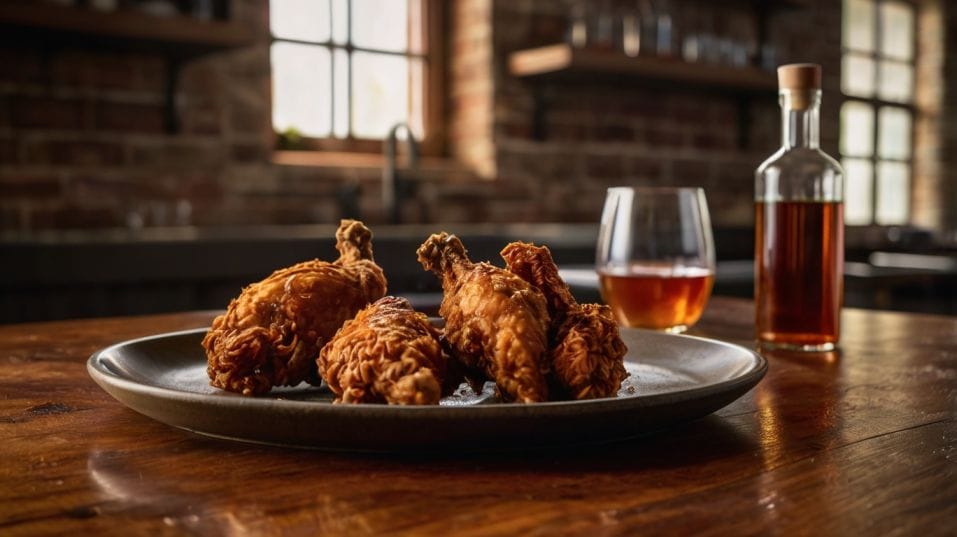Spicy Food and Whiskey: A Risk That Pays Off
Level up your whiskey game with bold pairings that teach your palate control, contrast, and how to thrive under heat.

Ever wonder what happens when you throw whiskey into the ring with seriously spicy food? It’s not a safe bet—but that’s the point.
For whiskey newcomers ready to level up, this combo unlocks flavors you won’t find on any tasting flight. It’s not a gimmick.
It’s a pressure test. And when you get it right, it’s unforgettable. Ready to taste what your palate’s really made of?
Why Heat and Whiskey Make Sense
Whiskey is already a study in contrast—fire and grain, sweetness and bite, roughness and elegance. Spicy food operates on the same edge.
Both are layered, both can overwhelm, and both reward attention. But pairing them? That’s not instinctive.
It’s reactive. Done right, it teaches you more about whiskey than any tasting flight or textbook ever could.
When spice hits your tongue, it changes the way you process flavor. Capsaicin—the compound that delivers heat—doesn’t just burn. It shifts perception.
It dulls sweetness, amplifies bitterness, and increases sensitivity to alcohol. That’s where the challenge lives. But it’s also where flavor breaks open.
To pair successfully, you need to consider three things: intensity, contrast, and balance. You’re not just fighting fire with fire. You’re creating tension, then resolving it. The goal isn’t harmony—it’s excitement that stays controlled.

The Right Whiskey for the Right Heat
You can’t treat all spice the same, and you shouldn’t treat all whiskey the same either. This isn’t about matching flavors. It’s about managing reactions.
Chili Heat (Jalapeño, Habanero, Thai Chili)
These bring direct, front-of-mouth heat. They spike quickly, then fade. Bourbon—with its high corn content, soft sweetness, and robust structure—absorbs this kind of heat without losing character.
The caramel and vanilla tones round the edges, giving your palate something to hold onto when the chili hits.
Try bourbon with spicy fried chicken, pad kee mao, or even Nashville hot sandwiches. The oil and fat in the food cushion the alcohol burn, while the whiskey's sweetness plays against the savory intensity.
Sichuan Peppercorn (Numbing Spice)
This is more neurological than physical—it buzzes, tingles, and lingers. Pairing this with something delicate won’t work. You need structure and sharpness.
Rye whiskey, dry and spicy on its own, stands up beautifully. The grain character pushes through the numbing effect and gives you contrast where you need it.
Match rye with mapo tofu, cumin lamb skewers, or dishes with a heavy five-spice kick. Let the whiskey push back and assert its place.
Smoke and Chili Together
When food brings both spice and smoke—like chipotle, adobo, or char-heavy barbecue—peated Scotch becomes a serious player. The danger here is overkill.
Alcohol heat plus chili heat plus smoke? It can get chaotic. But with enough fat in the dish—think brisket, pork belly, mole negro—that peated edge rounds into something primal and grounded.
Islay Scotch isn’t for beginners. But if you’re willing to slow down and take your time, it will show you things no other whiskey can.
Tasting Techniques That Actually Work
If you’re eating spicy food and sipping whiskey, treat it like a progression. Don’t just gulp and bite. Sequence matters.
Start clean.
Take a sip before you eat anything. This gives you a baseline. Then take a bite. Let the spice unfold. Then sip again. That second taste?
That’s where you learn what the whiskey is really made of. You’ll notice structure, finish, and whether it stands its ground—or folds.
Control the temperature.
Spicy food heightens your sensitivity to alcohol, especially at higher proofs. If your whiskey is warm, that burn will spike and kill flavor. Try chilling it just slightly.
Not cold—just cool enough to keep the alcohol in check and the flavors tight. You’ll get more clarity, more balance, and a smoother ride.
Mind the proof.
This is where beginners often go wrong. A 130-proof cask strength bourbon might sound impressive, but if your food is already hot, that much alcohol can overwhelm everything.
Start in the 90–100 proof range. Learn how different levels react with spice before you bring out the heavy hitters.
Small sips, slow pace.
With spice in the mix, your palate gets fatigued faster. Tiny pours and slower pacing let you taste longer and learn more. It’s not about volume—it’s about depth.
Building a Whiskey Collection That Can Handle Heat
If you’re serious about flavor—and collecting—start thinking beyond dessert notes and easy sippers. Build a shelf that thrives in tough conditions.
Look for:
- Structure over sweetness. Too much sugar gets lost next to heat. You want body, balance, and grain character.
- Proof with control. High proof can be amazing—but only if the whiskey carries its weight. Avoid the flashy bottles and look for ones that feel integrated and built for pairing.
- Smoke with restraint. Peated whiskey doesn’t need to punch you in the teeth to be effective. A soft, smoky finish adds complexity without dominance.
This kind of collection earns its keep. These bottles don’t just sit on your shelf—they work. They evolve. They perform under pressure.
Final Thoughts
Pairing whiskey with spicy food isn’t just a thrill—it’s a shortcut to better tasting. It sharpens your senses. It teaches control.
It shows you how heat, grain, wood, and proof all interact when stakes are high. Most people avoid this territory because it’s unpredictable. But that’s exactly why it pays off.
So don’t play it safe tonight. Find a dish with real heat. Pour something that can hold its ground. Taste it before, during, and after. Pay attention. Let the fire teach you. Build a palate that can take a hit—and come back stronger.




